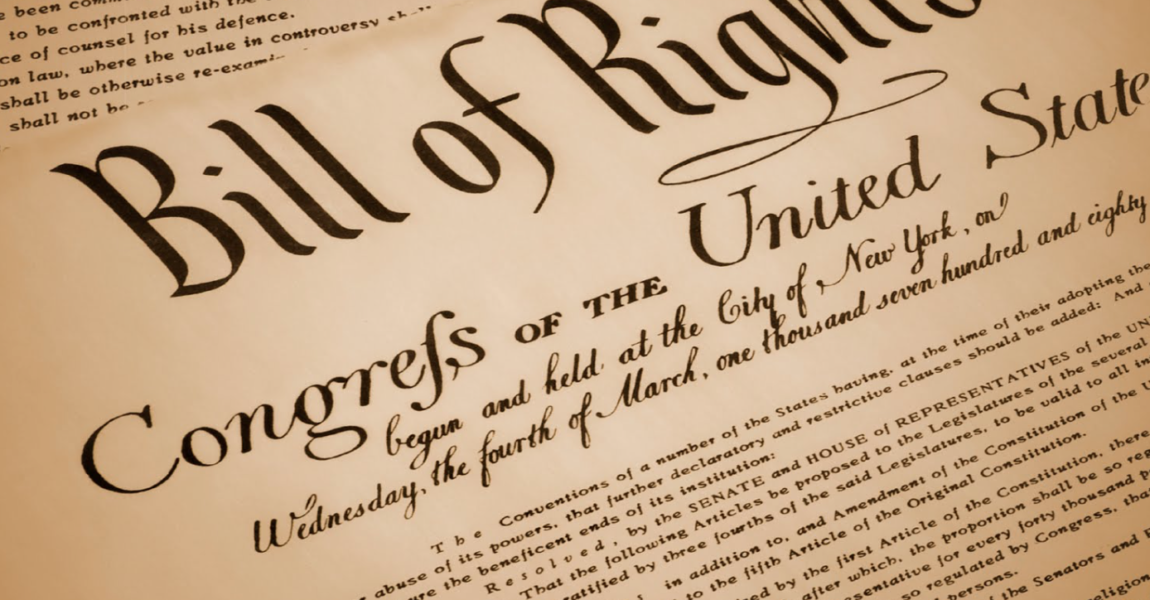
I never tire of examining Power and how the Founders of our Nation framed the Constitution to provide a structure of governance that would be effective, but also how they built in restraints against the natural accretion of too much power in too few hands.
I am, however, watching with interest a number of cases before the Supreme Court this term that address “Rights” of our People as opposed to the power of their government. And every day, it seems new issues concerning our “Rights” arise. From kneeling football players to reverse discrimination on college campuses to the closing of abortion clinics, the issues are plentiful and important.
That being so, I wanted to craft a series of columns on the Bill of Rights to provide my readers with some points of reference as they consider how the Constitution applies to such situations.
In this series we will explore 1) the Source of the Bill of Rights, 2) Who’s rights does do they protect, 3) Whom does it protect the rights from, and 4) What rights are protected.
The Source:
First what exactly is The Bill of Rights?
Thomas Jefferson defined them as follows: “A Bill of Rights is what the People are entitled to against every government on earth, general or particular, and what no government should refuse or rest on inference.”
Historically, Americans consider the first 10 amendments to the Constitution as the Bill of Rights. Among other liberties, they include Freedom of Speech, Religion, the Right to Bear Arms, the Right to be secure against Unlawful Search and Seizure, or Self-Incrimination, the Right to Trial and Counsel and not to be subjected to Cruel and Unusual Punishment.
Ironically, what we most treasure today as our express Constitutional rights almost never made it into the Constitution.
At the Constitutional convention there was a strong debate about whether such an express listing of rights was necessary and might even be dangerous. James Madison said, “ . . . an enumeration which is not complete is not safe.”
Influenced by Philosophers like John Locke and other adherents to “Natural Law” theory, many of the framers believed that our rights are God given. They are not granted to us by means of a social compact with a government, even a democratically elected government. We have these rights already. We, the People, “are endowed,” in the words of the Preamble, “with certain Inalienable rights.” For those who held this view, there was no need to set out the rights in some list. They pre-existed and existed separately from the Constitution.
There were, to be sure, contrary views.
After all, our forefathers were careful to build Checks and Balances into the Constitution and provide for the Separation of Powers. They had a healthy distrust of the strong centralized federal government they were forming and argued for the inclusion of a list of fundamental rights. Nevertheless, the Bill of Rights was not included in the original Constitution as it was adopted and reported out of the convention in 1789.
It was only after the ratification process had moved to the States that the demand for a Bill of Rights became an imperative. Their inclusion in the final ratification of the Constitution in 1791 was something of a political compromise. Though it was expected that 9 states (the required number for approval) would have voted for ratification even if no Bill of Rights was included, in the three largest states at the time, New York, Virginia and Massachusetts there were strong indications that unless included they would not go along.
The genius of the compromise that secured a unanimous vote by the States was the 9th amendment. It provided the safety valve, a means to insure that the listing of certain rights did not endanger the recognition of other “inalienable” rights.
The 9th Amendment reads, “The enumeration in the Constitution of certain rights shall not be construed to deny or disparage others retained by the People.”
I am endlessly fascinated by the language skills employed in the drafting of the Constitution. Three words are very important in that sentence.
First “retained.” The use of the word “retained’ signifies that rights are already possessed. Its use, as well as other phrasing in the Bill of Rights, presupposes our rights exist separate from the constitution.
The other two words are “Others” and “People.” What “other” rights are there? And whom all does the word “People” encompass”?
We will explore the breath of those two words in future segments.